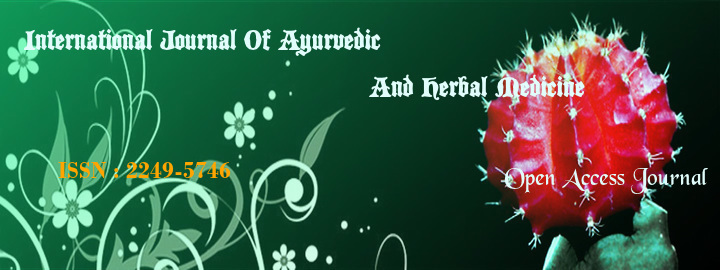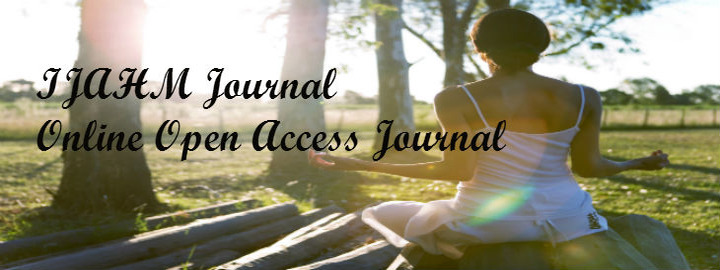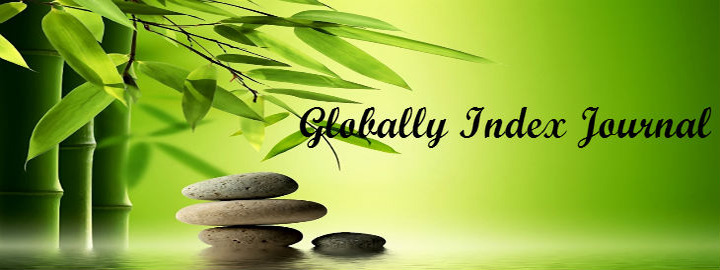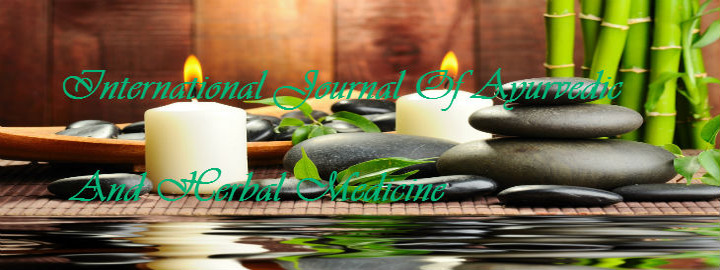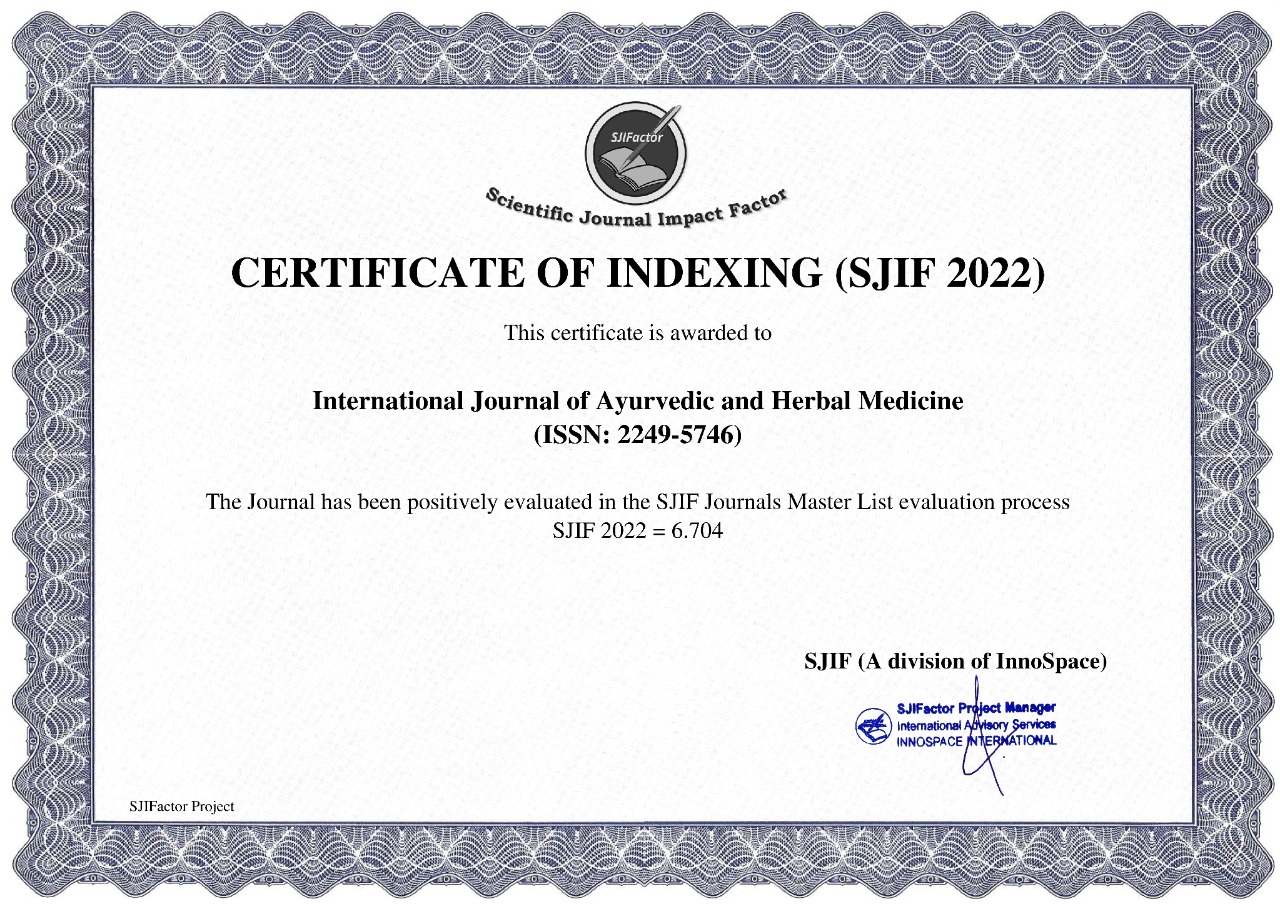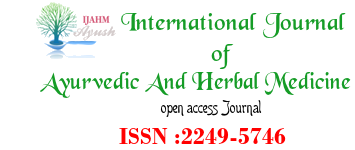


1*Dr Gite Y. A., 2Dr Adhav P. R. 3Dr Bhagat S. S., Dr Jagtap R. S.
1*M.D. (Ayu), M.B.A. (HSM), D.Y.T., Assistant Professor,
2M.D. (Ayu) A.V.P.,Ph.D.,Professor & Principal, 3P.G. Scholar ,
Dept of Kayachikitsa, SVNHT’s Ayurved Mahavidyalaya,
Rahuri Factory, Dist-Ahmednagar,Maharashtra, India
Abstract
Pandu and low haemopglobin level are very common conditions encountered in India. It is also observed that females during pregnancy and females in reproductive age are more prone to low haemoglobin level. First year graduation females were involved in this clinical study. Comparison between Ayurvedic compounds against well known modern science drug was made. Objective of study was to find which one is better and to compare them in account of side effects. 15 patients from Group A were treated with Arogyavardhini Rasa along with Tapyadi Loha, while 15 patients from Group B were treated with Cap Autrin each for 60 days. At the end it was found thatAyurvedic drug increased Hb gm% more than Cap Autrin. No side effects were observed in case of Arogyavardhini Rasa along with Tapyadi Loha. Pitta prakriti, Mandagni, Krura Koshtha and Poor socioeconomic status were found major factors for low haemoglobin level. Statistical analysis did not show significant difference. (t =1.37, P = 0.091; i.e. P > 0.05 but P < 0.10)
REFERANCES
1. 1. Vagbhata, Ashtanga Hridaya (Sartha Vagbhata), edited by Dr. Ganesh Krishna Garde, Nidanasthana, Pandurogashophavisarpanidanam, 13/3, reprint edition, Pune, Anamol Prakashana, 2008, p.200
2. Agnivesha, Charaka, Dridhabala, Charaka Samhita, edited by Vidyadhar Shukla, Ravidatta Tripathi, Uttarardha, Chikitsasthana, Pandurogachikitsitam, 16/6, reprint edition, Delhi, Chaukhamba Sanskrit Pratishthana, 2000, p.396.
3. API textbook of MEDICINE, edited by Siddhatrh N. Shah et al, Volume II, B. C. Mehta, Chapter 13/2, 8th edition, Mumbai, The Association of Physicians of India, 2008, p.787.
4. Patil Ragini, Kulakarni Yogini, Assessment of Haemoglobin percentage of Adolescent Females Residing in Rural Areas of Nigadi Village w.s.r. to Etiopathogenesis of Pandu Vyadhi, IJRAP - 3(3), May-June 2012, p.395 (Accessed from www.ijrap.net)
5. Susruta Susruta Samhita, edited by Dr Anant Ram Sharma, Volume III, Uttaratantra, Pandurogapratishedham, 44/3, 1st edition, Varanasi, Chaukhamba Subharati Prakashana, 2001, p.354.
6. Ibidem 1, Nidanasthana, Pandurogashophavisarpanidanam, 13/5,p.200
7. http://en.wikipedia.org/wiki/Hemoglobin, last accessed on Sep 13th of 2014.
8. Ibidem 3, Volume II, B. C. Mehta, Chapter 13/2, p.788.
9. Vaidya Pandit Hariprapannaji Sharma, Rasa Yoga Sagara, Prathama Bhaga, Shloka No. 1306-1308, reprint edition,Varanasi, Krishnadas Academy, 1999, p.142.
10. Ibidem 1, Chikitsa Sthana, Panduroga Chikitsitam, 16/20-23, p-308
11. K.D. Tripathi, Essential of Medical Pharmacology, Section 10, Chapter 39, Chart 39.1, 4th edition, updated reprint, New Delhi, JAYPEE BROTHERS MEDICAL PUBLISHERS (P) LTD, 2001, p.584.
12. Drug Today, Nutrition, 12E, Iron Preparation, Cap Autrin, April-June 2005, p.762.
13. http://en.wikipedia.org/wiki/Iron-deficiency_anemia#A_lack_of_iron_in_the_diet,
last accessed on Sep 13th of 2014
14. Agnivesha, Charaka, Dridhabala, Charaka Samhita, edited by Vidyadhar Shukla, Ravidatta Tripathi, Purvardha, Sutrasthana, Santarpaniyamadhyam, 23/5, 2nd edition, Delhi, Chaukhamba Sanskrit Pratishthana, 2000, p.317.
15. Gangadhar Shastri Gune, Ayurvediya Aushadhi Gunadharmashastra (Bhaga 1-5),
Bhaga-3, Chapter 48, reprint edition, Pune, Vaidyaka Grantha Bhandar, 2005, p.338-339
16. Ibidem 9, Shloka No. 1310-1312, p.142
17. Ibidem 11, Section 10, Chapter 39, Use/Iron Deficiency Anaemia, p.386.
18. Ibidem 11, Section 10, Chapter 39, Use/Megaloblastic Anaemia, p.386.
index







